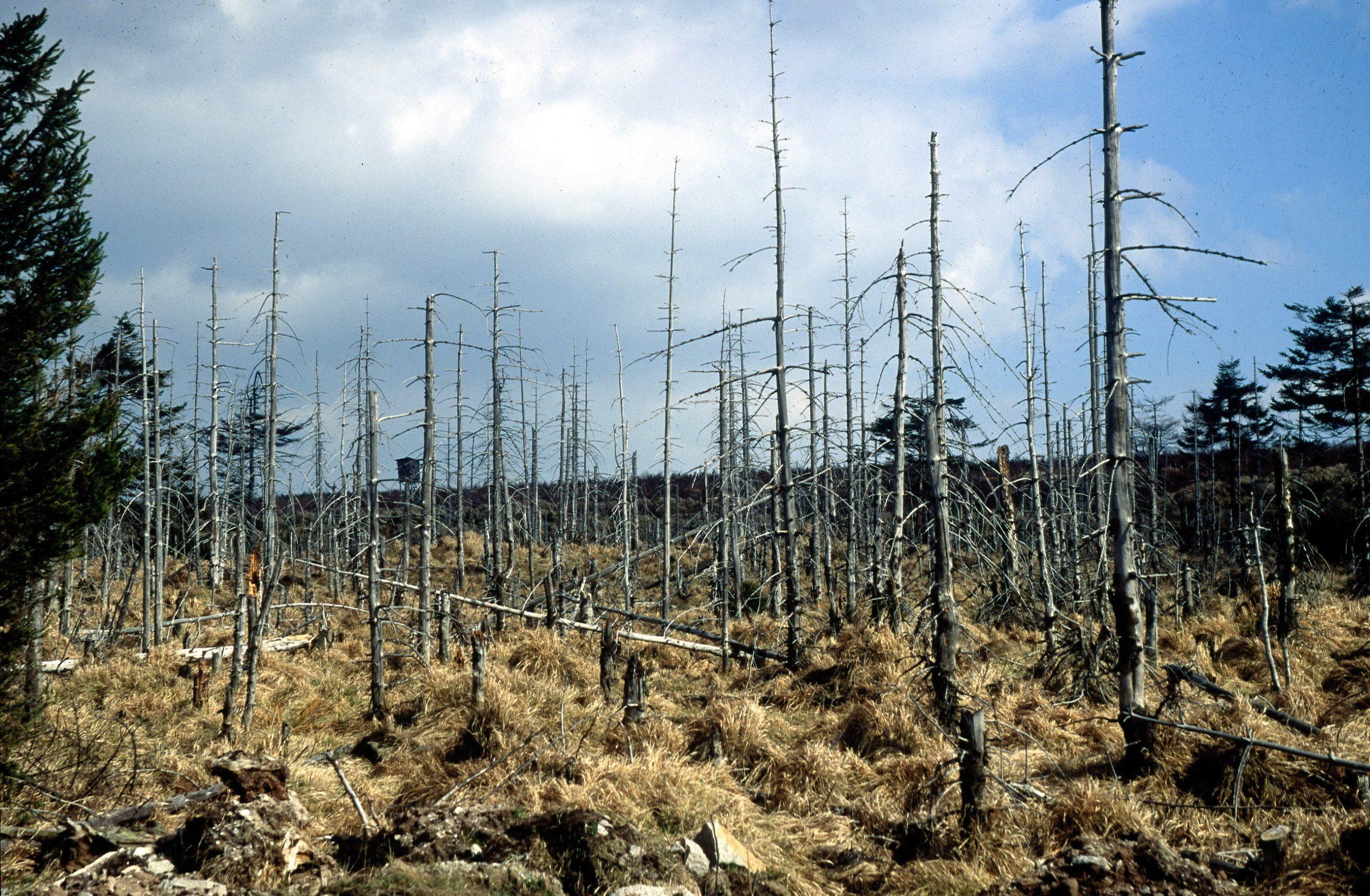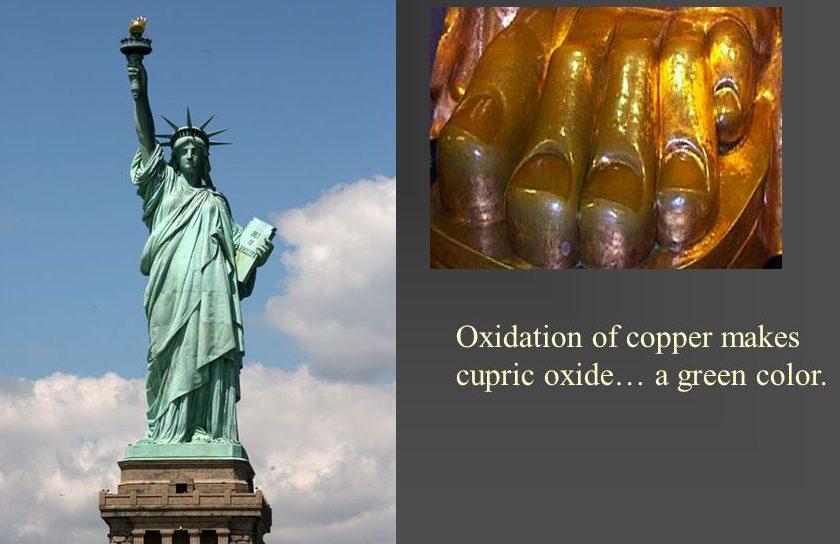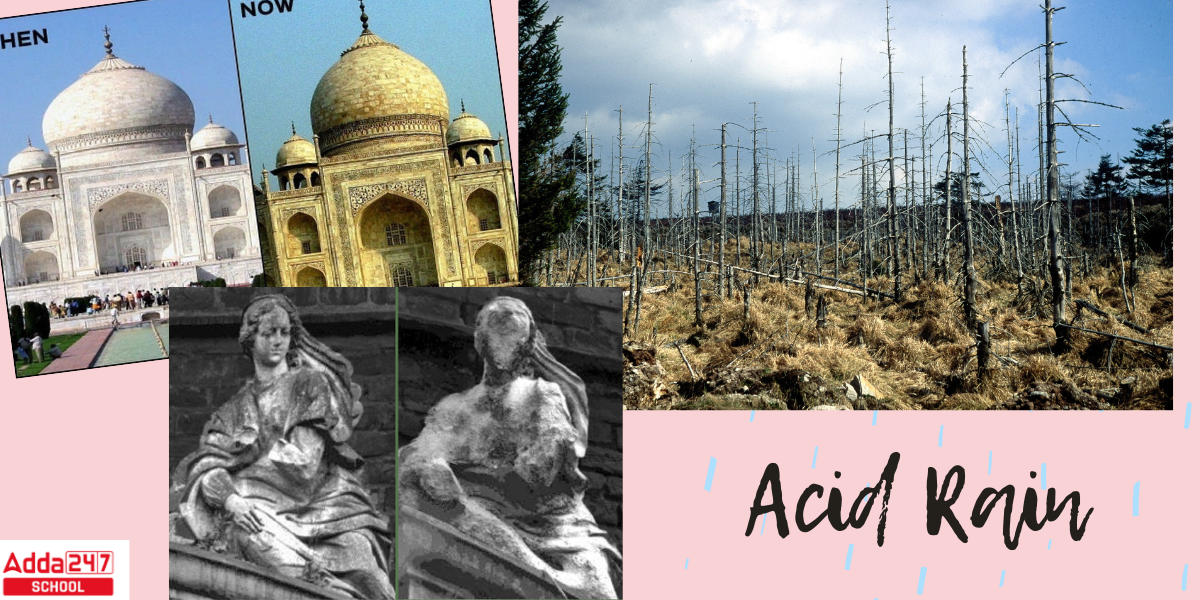Acid Rain: We all learned about acid rain in environmental science class at school. Acid rain is an umbrella term that refers to any precipitation containing acidic components that fall to the earth from the atmosphere, such as sulfuric or nitric acid. Acid rain can fall from the sky in both wet and dry forms. It is also known as acid deposition. This acid deposition might be acidic rain, snow, fog, hail, or even dust. When sulfur dioxide (SO2) and nitrogen oxides (NOX) are released into the atmosphere and carried by wind currents, acid rain occurs. Read the entire article to learn about acid rain’s causes, chemical reactions, consequences, and prevention.
What is Acid Rain?- Definition
Acid rain is a common phrase for acid deposition, which relates to the various methods by which acidity can travel from the atmosphere to the Earth’s surface. Acid deposition also involves the dry deposition of acidic substances and gases, which can have an impact on landscapes during droughts. Thus, even when there is no precipitation, acid deposition can have an impact on landscapes, architecture, and the living organisms that inhabit them. Sulfuric and nitric acids are formed when SO2 and NOX combine with water, oxygen, and other molecules. These combine with water and other substances before falling to the ground.
Acid Rain Types
Acid deposition encompasses both acidic rain and other types of acidic wet deposition, such as snow, sleet, hail, and fog (or cloud water). Acid rains occurs in two forms: wet and dry.
- Wet Deposition
Wet deposition refers to any type of precipitation that eliminates acids from the atmosphere and deposits them on the earth’s surface. Sulfuric and nitric acids generated in the atmosphere are carried to the ground in the form of rain, snow, fog, or hail.
- Dry Deposition
In the absence of moisture, acidic particles and gases can potentially deposit from the environment called dry deposition. In the absence of precipitation, harmful particles and gases adhere to the ground via dust and smoke. Acidic particles and gases can swiftly deposit on surfaces (water bodies, vegetation, and structures) or react during atmospheric transit to generate bigger particles that can be detrimental to human health. When deposited acids are wiped off a surface by rain, the acidic water travels over and through the ground, harming plants and fauna such as insects and fish.
The quantity of acidity in the environment that falls to earth by dry deposition is determined by the amount of rainfall received in a given area. For example, the ratio of dry to wet deposition is larger in desert locations than in areas that receive several inches of rain per year.
Acid Rain pH
The concentration of hydrogen ions (H+) in a solution is measured as acidity. The pH scale is used to determine whether a solution is acidic or basic. Below a pH of 7, substances are considered acidic, and each unit of pH below 7 is 10 times more acidic or has 10 times higher H+, than the unit above it.
Although some of the SO2 and NOX that generate acid rain come from natural sources such as volcanoes, the majority of it comes from the combustion of fossil fuels. This precipitation has a pH that is acidic and reacts with the substances on which it drops. For example, if rainwater with a pH of 5.0 falls, it contains 10 microequivalents of H+ per liter. In another example, rainwater with a pH of 4.0 has 100 micro equivalents of H+ per liter.
However, the geographic area of any particular natural source of acidification is limited, and in most situations, it only lowers the pH of precipitation to about 5.2.
Acid Rain Formula/ Chemical Reaction
In simple terms, atmospheric gases react with water and form many toxic acids and fall off as acid rain on Earth.
- Because of the intake of carbon dioxide (CO2) from the atmosphere, ordinary rainwater is slightly acidic. Water and carbon dioxide react to generate mild carbonic acid, which is not particularly hazardous on its own. The resulting reaction is:
H2O (l) + CO2 (gas) = H2CO3 (aq.) (Carbonic Acid)
Furthermore, depending on the emissions associated with individual volcanoes, volcanic activity may generate sulfuric acid (H2SO4), nitric acid (HNO3), and hydrochloric acid (HCl).
- Acid deposition is mostly caused by anthropogenic activity, particularly the combustion of fossil fuels (coal, oil, and natural gas) and the smelting of metal ores. When SO2 and NOx react with water, sulfuric and nitric acids are produced in the atmosphere. The most basic reactions are:
SO2 + H2O → H2SO4 ←→ H+ + HSO4 ←→ 2H+ + SO42
NO2 + H2O → HNO3 ←→ H+ + NO3
- Wet deposition products are produced by these aqueous phase processes (for example, in cloud water). Other natural sources of acidity include the formation of nitrogen oxides as a result of lightning’s conversion of air molecular nitrogen (N2) and wildfires’ transformation of organic nitrogen.
Acid Rain in India Example
The Taj Mahal is one of the world’s seven wonders and one of India’s most iconic monuments. The historical monument’s exquisite white marble has been harmed by acid rain. Agra has various factories that produce sulfur and nitrogen oxides in the environment. People continue to utilize coal and firewood as home fuels, with vehicle emissions contributing to the issue of pollution. Acid rain reacts with the Taj Mahal’s marble (calcium carbonate) in the following way. The corrosion of this wonderful monument is caused by the production of calcium sulfate.
CaCO3(s) + H2SO4(l) → CaSO4(s) + H2O(l) + CO2(g)

Acid Rain Examples
Northeastern United States and Canada –
Due to emissions from industrial operations and power stations, this region had severe acid rain concerns. Acid rain harmed forests and aquatic ecosystems, prompting government laws to minimize emissions.

Statue of Liberty –
The Copper Statue of Liberty has also been harmed by the combined action of acid rain and corrosion for over 30 years and is thus becoming green.

Black Forest in Germany –
The black forest in Germany has been devastated by acid rain, which has ruined the region’s forests and impaired the health of its trees.

Scandinavian Lakes and Woods –
Acidified lakes and ruined woods plagued Sweden and Norway. These countries have made significant mitigation efforts, and impacted ecosystems have begun to recover.
Causes of Acid Rain
Acid rain is caused by both natural processes and human mechanisms (fossil fuel, deforestation, veichle etc). The principal causes of acid rain induced by natural and human activity are listed below:
- Uses of Fossil Fuels: We create electricity by burning fossil fuels. When fossil fuels, notably coal, and oil, are burned, nitrogen oxide (NOx) and sulphur dioxide (SO2) gases are released into the atmosphere. These two gases contribute significantly to acid rain. Fossil fuels are employed in a variety of everyday activities, including energy generation, heating, and cooking. Coal and oil combustion harm the environment by producing NOx and SO2.
- Industrial Processes: The Industrial Revolution increased pollution significantly, particularly in power plants and manufacturing industries. Power plants require fuel to generate electricity. These pollutants are also released directly into the atmosphere by some industrial activities, such as manufacturing and chemical manufacture.
Similarly, manufacturing businesses such as cement manufacture, chemical production, refineries for petroleum, metal production, plastic processing, and pharmaceutical production contribute to NOx and SO2 emissions into the environment.
- Uses of vehicles: Automobiles have long been a major source of pollution in the environment, as well as a contributor to acid rain. As a consequence of combustion, automobiles, trucks, and other vehicles generate nitrogen oxides. More nitrogen oxide and sulphur dioxide have been emitted into the atmosphere as the number of automobiles and other vehicles has increased over the last few decades. Acid rain is most common in metropolitan areas due to high levels of traffic pollution.
- Natural Sources: Volcanic eruptions and wildfires can emit sulphur dioxide and nitrogen oxides into the atmosphere, but they contribute less to acid rain than human activity.
- Biological Activity –Acid rain is caused by a variety of biological activities that occur in the environment. Vegetation breakdown and forest fires are examples of these processes. Dimethyl sulfide, a significant component produced by biological activities, contains sulphur, one of the primary ingredients contributing to acid rain.
- lightning – Acid rain is naturally caused by lightning. Natural processes cause nitric oxide to be released when lightning strikes. Through electrical activity, this nitric oxide combines with water molecules in the environment.
- Deforestation – NO2 and SO2 can be removed from the air by trees. When forests are cleared for agriculture or urban expansion, however, trees lose their inherent capacity to absorb contaminants from the air. It can raise the quantities of sulphur dioxide and nitrogen oxides in the atmosphere, resulting in acid rain.
- Agriculture: The usage of fertilizers can cause ammonia to be released into the atmosphere, where it can react with sulfur and nitrogen molecules to generate acid rain.
Acid Rain Effects
Acid rain is extremely hazardous to human health, agriculture, vegetation, architecture, and wildlife. It wipes away the nutrients necessary for plant growth and survival. Acid rain has an impact on agriculture because it changes the composition of the soil.
- Destruction of aquatic ecosystems: Acid rain can disrupt aquatic ecosystems by increasing the acidity of water bodies. Acid rain has an impact on the aquatic ecology when it falls and runs into rivers and ponds. It changes the chemical composition of the water to a state that is damaging to the aquatic ecosystem’s ability to exist and creates water pollution. This can result in the loss of fish populations, aquatic plant degradation, and the spread of the food chain.
- Soil Degradation: Acid rain can impair soil quality, lowering fertility and plant life support. This has the potential to have a domino impact on agricultural and food production.
- Historic Architecture Damage – It causes damage to structures and monuments constructed of stone and metal. Acid rain damage can result in major economic expenses, including infrastructure repair and maintenance.

- Destructive effects on Forest: Acid rain can harm forests by draining important nutrients from the soil, making it difficult for plants to develop. This weakens the trees and makes them more vulnerable to diseases and harsh weather.
- Effects on Human Health: Air pollution, such as sulphur dioxide and nitrogen oxides, can cause or worsen respiratory disorders. People with respiratory illnesses such as asthma or chronic bronchitis have difficulty breathing. Nitrogen oxides also contribute to ground-level ozone. This ground-level ozone causes respiratory issues such as pneumonia and bronchitis, as well as chronic lung damage.
Acid Rain Prevention
We people are the primary cause of the acidification of the environment, so we must take responsibility for finding a solution. In order to decrease acid rain, pollutant emissions must be reduced. A commitment at the government and corporate levels is required to drive a set of measures:
- The only preventative measure we can take against acid rain is to reduce nitrogen and sulphur oxide emissions. Filter and cleanse the factory water before returning it to the rivers.
- Reduce polluting gas emissions from industries. As responsible citizens, we should be aware of the adverse impacts they produce, as well as the industries that unethically emit nitrogen and sulfur compound pollution.
- Encourage individuals to utilize less polluting modes of transportation, such as bicycles or walking.
- Encourage the use of energy from renewable sources in place of fossil fuels.
- Encourage the development of innovative technologies and innovations targeted at reducing energy use and creating renewable energy.
- Increase the number of trees planted to absorb dirty air. More forestation is also required near industry.
- Lastly, the government needs to make the general public aware of the need to lower domestic energy consumption.









 CUET UG Final Answer Key 2025 Revised, D...
CUET UG Final Answer Key 2025 Revised, D...
 DU Cut off 2025, Delhi University Expect...
DU Cut off 2025, Delhi University Expect...
 OUAT Result 2025 OUT @ouat.nic.in: Check...
OUAT Result 2025 OUT @ouat.nic.in: Check...









